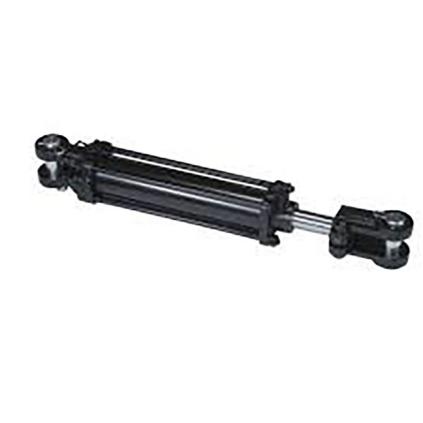Key points about single-acting telescopic cylinders
2024-01-22
A single-acting telescopic cylinder is a type of hydraulic cylinder that operates using hydraulic fluid to generate linear motion. Unlike double-acting cylinders, which use hydraulic pressure to extend and retract the piston, single-acting telescopic cylinders use hydraulic pressure to extend the piston, and rely on external forces (such as gravity or springs) for the retraction phase. Here are key points about single-acting telescopic cylinders:
1. Telescopic Design: Single-acting telescopic cylinders have a telescopic or multi-stage design. The cylinder consists of multiple nested stages that collapse inside one another when retracted and extend to their full length when pressurized hydraulic fluid is applied.
2. Hydraulic Operation: These cylinders are operated by the application of hydraulic pressure to one side of the piston. The hydraulic fluid enters the cylinder, causing the piston to extend. The retraction of the piston is achieved by external forces, such as the weight of the load or the use of springs.
3. Applications: Single-acting telescopic cylinders are commonly used in applications where the load can provide the force needed for retraction. This design is often found in dump trucks, agricultural equipment, and other mobile hydraulic systems.
4. Load-Lowering Valve: In some single-acting telescopic cylinders, a load-lowering valve may be incorporated to control the speed of the cylinder's retraction. This valve regulates the flow of hydraulic fluid, ensuring a controlled descent of the load.
5. Space Efficiency: The telescopic design allows for a long stroke length while maintaining a compact retracted length. This space efficiency is advantageous in applications where there are constraints on the available installation space.
6. Reduced Complexity: Single-acting telescopic cylinders are generally simpler in design compared to double-acting cylinders. They have fewer internal components, which can contribute to reduced maintenance and cost-effectiveness.
7. External Forces for Retraction: The retraction phase of a single-acting telescopic cylinder relies on external forces. This can include the force exerted by the weight of the load being lifted or the use of springs or other mechanisms.
8. Cautions in Design: When using single-acting telescopic cylinders, it's important to consider the application requirements carefully. The external forces for retraction should be sufficient to overcome any resistance, and the design should ensure safe and controlled retraction.
Single-acting telescopic cylinders are chosen based on the specific requirements of the application, and their design provides a balance between functionality, space efficiency, and simplicity in hydraulic systems.



